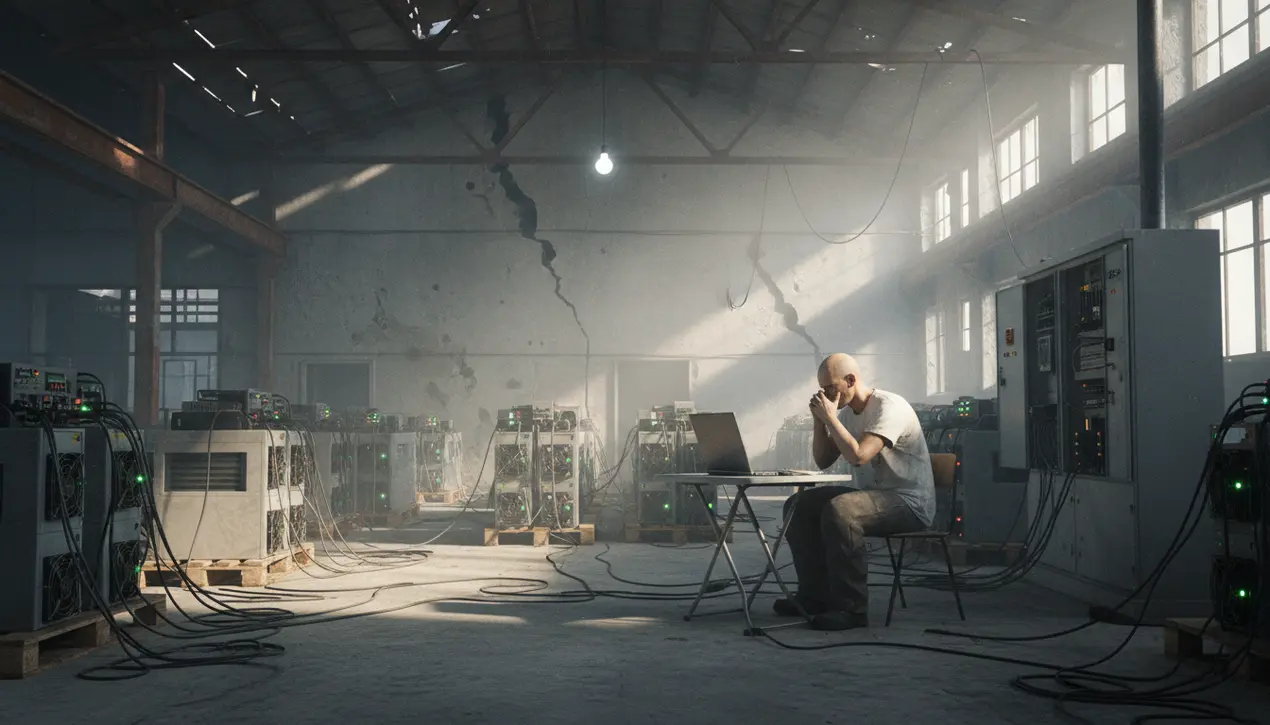- News
- bitcoin
- Bitcoin miner fees fall to 12-month low, underscoring long-term reliance on block subsidies

CryptobitcoinMining Difficulty
Bitcoin miner fees fall to 12-month low, underscoring long-term reliance on block subsidies
DA
David Collins
2 hours ago7 min read1 comments
The lifeblood of Bitcoin mining revenue has thinned to a concerning trickle, with transaction fees plummeting to a 12-month low of roughly $300,000 per day. This paltry sum now constitutes less than 1% of total miner income, a stark and telling statistic that underscores the network's continued, almost absolute, reliance on the block subsidy.For the uninitiated, this might seem like a minor market fluctuation, but for those of us who have been in the trenches since the early days, this is a flashing red signal about the fundamental economic security of the entire Bitcoin ecosystem. The block subsidy—the brand-new bitcoin awarded to the miner who successfully solves the cryptographic puzzle for each new block—is not just the primary revenue stream; it is the bedrock.It's the engineered, inflationary mechanism that pays for the immense, globally distributed computational power that makes the Bitcoin blockchain an immutable fortress. This subsidy, however, is pre-programmed to halve approximately every four years in an event known as the 'halving,' a built-in feature that systematically reduces the issuance of new coins until it eventually reaches zero.The long-term vision, the grand Satoshi Nakamoto blueprint, was always that as the block subsidy diminished, a robust and growing economy of on-chain transactions would take its place, with fees becoming the primary incentive for miners to continue their costly, energy-intensive work. What we are witnessing today is the exact opposite of that vision.At a time when the subsidy should be becoming less critical, it remains overwhelmingly dominant. This isn't just a bad quarter; it's a failure of scaling.The so-called 'innovations' of Layer 2 solutions and the endless chatter about ordinals and BRC-20 tokens have proven to be fleeting distractions, incapable of generating the sustained, high-fee environment necessary for long-term security. When fees are this low, it means the network is not being used for its primary purpose: peer-to-peer electronic cash transactions of significant value.It suggests a clogging of the economic arteries. The consequences of this trend are not theoretical.As we barrel toward the next halving, miners operating on razor-thin margins will be pushed to the brink. We've seen this movie before: a sharp drop in revenue leads to miner capitulation, a precipitous fall in hash rate, and a potential weakening of the network's security against a 51% attack.This isn't FUD; this is mathematical inevitability if the fee market does not mature. The altcoin maximalists and Ethereum apologists will point to this and sneer, claiming their complex smart contract platforms have solved this with their fee-burning mechanisms and perpetual inflation.But they miss the point entirely. Bitcoin's simplicity is its strength, and its security model is the most proven in the world.The solution isn't to complicate the protocol with reckless changes; it's to foster real, organic adoption that drives genuine demand for block space. We need more businesses settling large transactions on-chain, more individuals using Bitcoin as sovereign money, not just as a speculative asset to be custodied on an exchange.The current fee environment is a wake-up call. It tells us that while the digital gold narrative has taken hold, the global settlement network narrative is still in its infancy.For Bitcoin to survive and thrive for the next century, we must build an economy on top of it that is worthy of its security. The block subsidy won't be there to save us forever.
#featured
#bitcoin mining
#transaction fees
#block subsidies
#miner revenue
#network economics
#hash rate
Stay Informed. Act Smarter.
Get weekly highlights, major headlines, and expert insights — then put your knowledge to work in our live prediction markets.
Related News
Comments
Loading comments...
© 2025 Outpoll Service LTD. All rights reserved.